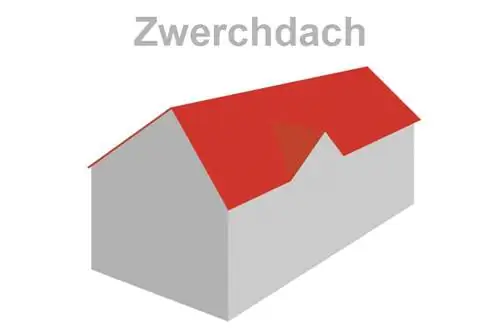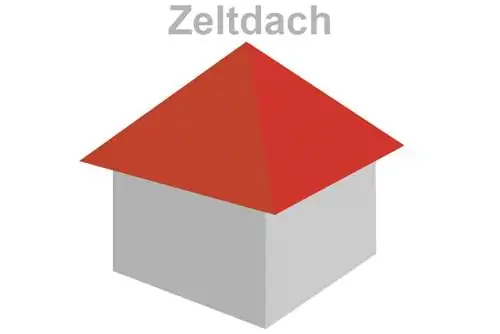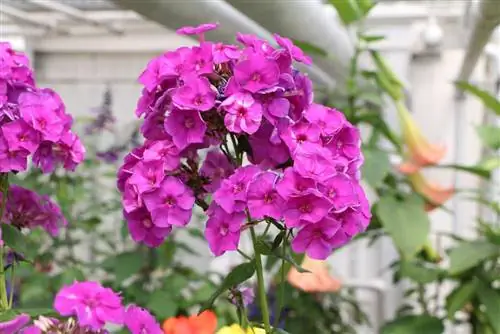- Author admin [email protected].
- Public 2023-12-17 03:39.
- Last modified 2025-06-01 06:48.
Pure exoticism on the windowsill, with the Guzmania an extraordinary beauty comes to the windowsill. If you bought a Guzmania from a flower shop, you don't have to plant it in a pot, but you can make it an eye-catcher in a bowl on the windowsill. Guzmania looks like a ball from which green oblong leaves with reddish bracts sprout.
Guzmania family - species diversity from the regular forests of Central and South America
Like the pineapple, the Guzmania is also a member of the bromeliad family and what once developed all its flowers in the rainforests of Central and South America can now become a great eye-catcher in the living room. There are 120 known species of the plant and through constant new crossings, Guzmania has become increasingly less sensitive, so that it can now live wonderfully on your home windowsill. Popular varieties for crossings are the 'Magnifica' and the 'Intermedia' also delight flower lovers. With a height of 60 cm and a width of 30 cm, the plant fits ideally on any windowsill.
But if you're hoping for the most beautiful floral scent, you'll be disappointed with Guzmania, because the flowers can't spread any scent. As a rule, this plant will have flowers in strong red tones, but there are also specimens that can shine with a yellow flower. If you take care of the plant adequately and also take care of the children that develop, then by purchasing a plant you can ensure that you will always have this exotic beauty in your living room or other room for the rest of your life.
The right watering - the first step to a long life
The ball of the Guzmania has to be immersed in a water bath at regular intervals, but it is so robust that it can survive even small dry periods without any problems. But it's not just the ball that craves water, the leaf funnel of the Guzmania can also always tolerate a small amount of water. However, you should avoid this in winter and also during the time when the plant blooms. When watering the Guzmania, you should make sure you use lime-free water and if you want to do something good for your Guzmania, you should also spray the slightly reddish leaves from time to time. If you don't pay attention to your Guzmania, you will unfortunately have to expect brown and withered leaves. You can also place the plant in a water bath if you have placed a layer of gravel and shards on the bottom of the pot. It is also ideal for the plant if it can be placed next to a humidifier or an indoor fountain, as a humid climate allows the exotic beauty to flourish.
If you are looking for the right place for your Guzmania, you should find a bright location, but there should be no direct sunlight or bright sun. Once you have found this place, Guzmania will reward you with the most beautiful flowers. The right temperature is also important for the Guzmania, because it can only develop optimally at an average temperature of 18 °C and will reward good care with a magnificent flower. When the Guzmania begins to bloom, the temperature in the room should be increased to 22 °C. High humidity and a lot of warmth, if you take this into account when caring for the plant, you will be rewarded with the most beautiful exotic plants on the windowsill.
Propagation of exotic beauty - the children provide new plants
The highlight of a Guzmania's life is when it blooms, but the plant lover can look forward to a short display of flowers, but at the same time it also means that you have to say goodbye to your Guzmania. After this unique effort in the life of a Guzmania, it will slowly die. The owner can be happy because he will be rewarded with several new small plants. The side shoots of the dying plant must reach half the size of the original guzmania and then they can be planted in a flower pot. If the mother plant can simply spend its life in a bowl, the so-called children do not have this ability. They can grow to full size in fresh potting soil if you also place a mixture of sand, beech leaves, sphagnum and fern roots at the bottom of the plastic pot. You can also mix a small amount of orchid substrate into the potting soil, which you can buy in flower centers everywhere. The children must be kept particularly moist and during growth they can tolerate a small amount of liquid fertilizer, which should be diluted a little with water. Now, over the next two years, you will have the pleasure of watching the children grow into full-blown Guzmania.
Pests on the plant - biological agents help quickly
If you want to keep your plant he althy at all times, you have to pay attention to the condition of the funnel when caring for it, because it must always be kept very clean. If this is not the case, the plant can easily rot and it will simply die without any kind. Of course, the Guzmania is not spared from pests, scale insects love the plant, but you can also always find mealybugs here. If the plant lover simply collects a small number of these pests, if there are a large number there are also effective biological remedies that can simply be used. As with all plants, you have to make sure that you quickly remove all withered parts of the Guzmania. Although Guzmania also grows on trees in its country of origin, it can also come into full bloom on your home windowsill if you pay attention to a humid climate and good care. Even if this plant is not one of the most permanent bloomers in your own home, you can still significantly improve the living atmosphere with this exotic beauty. The Guzmania can even delight as a gift, although flower lovers should also choose the variant with a yellow flower. Whether in the terrarium or on the windowsill, this plant brings the wild charm of South American rainforests into German living rooms.
From the depths of the jungles of Central and South America comes a plant that, with a little care, can be an exotic beauty in the living room. The Guzmania impresses with its deep green leaves and, once in its life, a beautiful flower. But after its flowering period, Guzmania's greatest achievement begins, because by forming many children it ensures that many new plants can colonize the windowsill after its life is over.
What you should know about Guzmania in brief
Guzmania comes from northwestern South America. The original form of Guzmania has red bracts, but many different colors have now been achieved. Guzmania belongs to the pineapple family. The colorful bracts rise in the middle of a leaf rosette, which over time can reach a diameter of approx. 50 cm.
- We water as needed, slightly less in winter.
- The plant loves warmth and light, so a bright place protected from the blazing sun is ideal.
- The temperatures should always be at least 18-23 °C.
- A relatively high humidity is absolutely necessary for good growth.
It is best to place a small indoor fountain or a humidifier near the Guzmania. But daily spraying also works. It is poured via the leaf funnel. Don't water the earth! In winter the leaf funnel can become empty, but in summer you should make sure that there is always some water here.
- Fertilization is carried out in summer to stimulate growth.
- Fertilization is carried out by spraying, approximately every 14 days.
- Complete fertilizer is used in a 0.1% solution.






